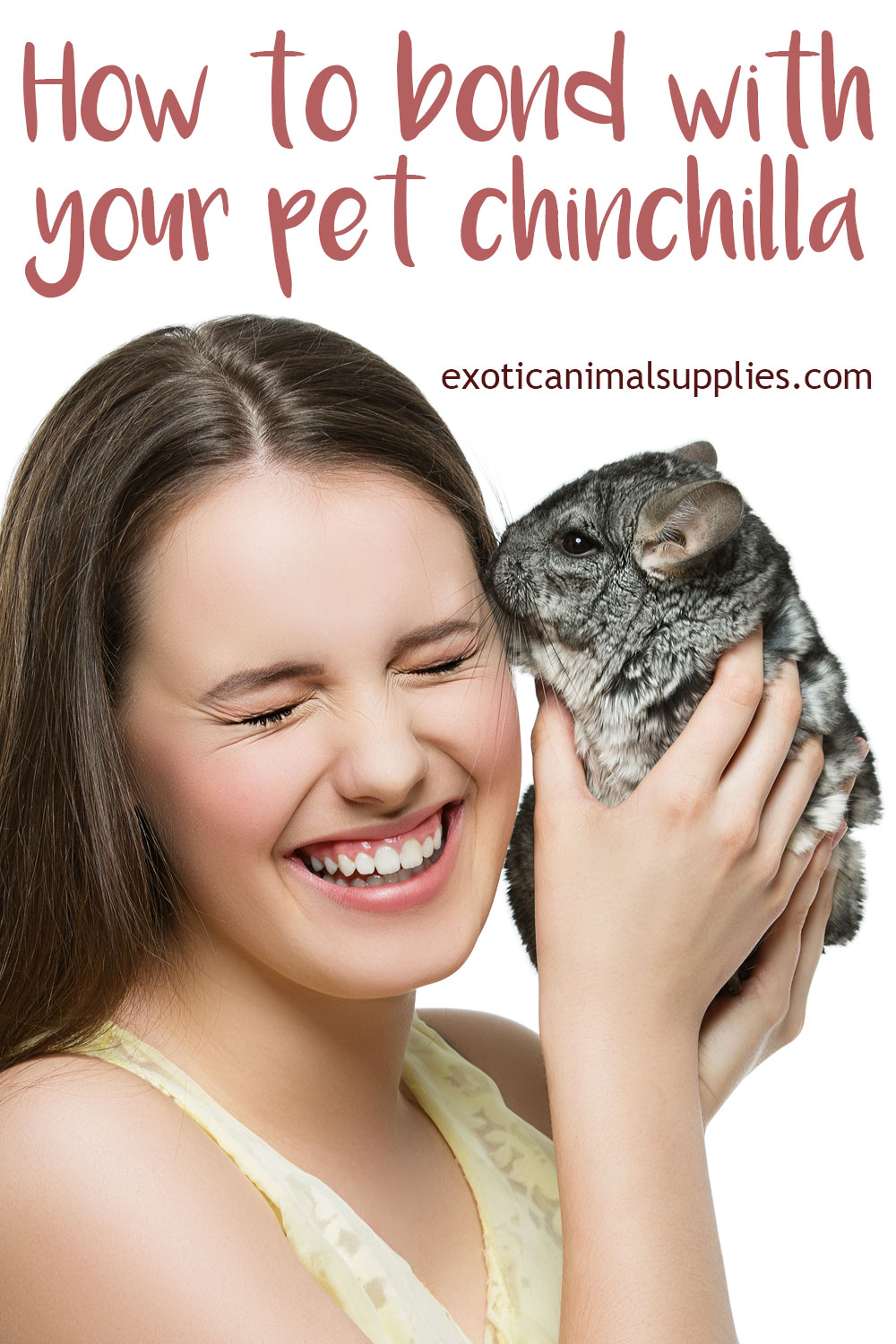Nothing is more exciting than the day you bring home a new pet chinchilla (or two!). But what is an exciting day for the humans in your household is often a scary day for a chinchilla. While you would hope your new pet will gladly hop into your arms like an excited puppy, you will need to take the time to get to know your chin and earn their trust.
How to Bond with Your Pet Chinchilla

Prepare for Your New Chinchilla
To help ease your chinchilla’s transition to your home, make sure you have their home set up before they arrive. Get a safe and properly sized chinchilla cage and set it up with all the essential chinchilla supplies. (Make sure to avoid these things to never buy your pet chinchilla.)
Fill the cage with toys, shelves and ledges to jump on, and make sure to include a hidey house so they have a safe space to go to.
Let Your Chinchilla Settle In
When you first bring your chinchilla(s) home, put them in their cage and let them be! I know you’re excited and want to play and cuddle them, but this move has been a scary experience for your chin. Make sure they have plenty of food, hay, and fresh water and then leave them alone to get used to their new cage. For the first few hours, try to keep the room quiet and calm. This will allow them to relax from the stress of the car ride and explore their new home.
Introduce Yourself to Your Chinchilla
Everything from this point on should be done on your chinchilla(s) terms. Depending on how tame they are and their personality, they may warm up to you quickly or they may take a lot of time. Don’t be surprised if you’re adopting a rescue chin that they may never warm up enough to be cuddled or easily held.
Chinchillas tend to sleep during the day and are more active in the evenings and at night. You may want to try to bond with your pet in the evenings when they’re bright-eyed and bushy-tailed.
After a day or two in your home, if your chinchilla seems calm, you can introduce yourself. The best way to do this is to open up a cage door (carefully, so your chin cannot escape) and stick your hand in the cage. Be quiet and still and eventually your curious chinchilla will come over to investigate. Don’t be surprised if your chinchilla gives your hand a little nibble, this is a part of their investigation.
During a time when you need to refill their food bowl, put some pellets in the palm of your hand and hold them inside the cage. Be still and eventually your chin will approach and eat out of your hand. Be still and quiet the first time. Repeat each day, adding on a little to your interaction. Try talking gently to them. Then try wiggling your fingers while they eat. Try putting both hands in the cage (one empty). Try petting the side of their face (this is a big one that may spook them and take some time).
Any time your chinchilla gets spooked and run away, stop doing the new activity and go back to the previous iteration. The next day try again. Over time you’ll get a sense of your chinchilla’s boundaries and as they become more comfortable with you it will become easier.
Occasionally you can offer healthy treats like cheerios, oats, or rosehips to help encourage the bonding, but you must limit this to once or twice a week to avoid overfeeding.
Over time, your chin will become comfortable enough they may start to hop on your hands. Passively let them do this so they become comfortable with the idea of being held by you. Once your chinchilla is comfortable enough to climb onto and sit on your arm and hand, you can hold and pick up your chinchilla. When you and the chinchilla are comfortable with this interaction, you can take the chinchilla to a safe play area in the home to run around and play. This playtime should become a daily activity for the chinchilla.
How to Avoid Scaring Your Chinchilla
It’s very easy to do something you think is benign that is terrifying for your pet chinchilla, and those actions can set back your bonding timeline.
Never push beyond what your chinchilla is comfortable with. If they run away or back into a corner of their cage then they are scared or uncomfortable. You should stop what you’re doing and give them a chance to calm down. A snapping bark or bite means you’ve really overstepped their boundaries and you need to stop whatever you’re doing.
Avoid chasing or pursuing your chinchilla. If you need to pick them up, scoop them up from below with both hands. Do not come from above. Chinchillas are prey animals and their instincts are that preditors will try to capture them from above. Similarly, most chinchillas will not want you to pet their back, so keep the scritches to their chin, neck, and top of their head between their ears.
With time and experience, you’ll soon figure out how to read your chinchilla’s body language. Your chin will bond with you in their own time and recognize you as a family member rather than a threat. Just be patient and loving and it will all be worth the hard work.
Help welcome your new chinchilla home by making sure you have all the supplies they need. Check out must have chinchilla cage accessories. Learn how to clean a chinchilla cage and the 10 things you should never buy your pet chinchilla.
